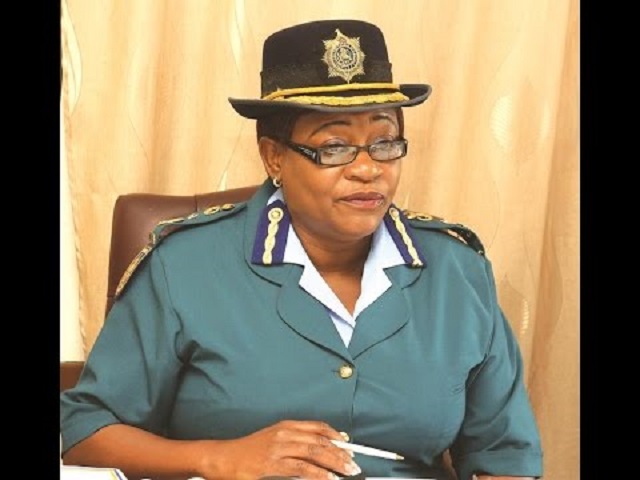Restating the case for Township Tourism KoByo

Lenox Lizwi Mhlanga
There are times when one has to say things more than once. If it’s not for posterity, it should be for emphasis. Bulawayo is a city that’s ripe for township tourism because of its rich urban township heritage and its position as the country’s undisputed cultural capital.
It is no accident that the city is hosting the 10th edition of Sanganai/Hlanganani World Tourism Expo for the second year running. It is being organised by the Zimbabwe Tourism Authority (ZTA) in conjunction with the Zimbabwe International Trade Fair Company (ZITF).
The expo that has been running from Wednesday at the Zimbabwe International Exhibition Centre ends on Sunday. According to the ZTA, 340 exhibitors from different markets in the region and the world registered compared to 236 who attended the 2016 edition which is a 44 percent growth.
The good news is that the majority of the exhibitors are from Bulawayo indicating that locals responded to the clarion call for support by businesses and entities from the City of Kings and Queens.
The Intwasa Arts Festival koBulawayo coinciding with the expo, also set sail on Wednesday with the street carnival, though, some work needs to be done to harness the potential and magic that Bulawayo possesses.
It is early days yet for us to summon the jury on the rebooted Intwasa adopted by the ZTA as more events are billed for today and tomorrow, its final day. Only then can we make a proper analysis of the event.
However, my focus is on how our local economy can take advantage of such events to build a sustainable tourism industry that could contribute to the projected $5 billion economy targeted by the Ministry of Tourism and Hospitality. Shifting the expo to Zimbabwe’s second largest city is a godsend for local operators including budding township tourism providers.
The Tourism Ministry and the ZTA launched the concept of township tourism in October 2012 at Harare’s Highfield township to promote historical and cultural tourism in local communities through the marketing of significant urban landmarks. Highfields being the home of the liberation struggle.
Township tourism emerged in the 90s in the metropolitan cities of developing countries where tourists were encouraged to visit the disadvantaged areas of the cities and see how the local people lived.
They became popular in Brazil, India and South Africa where they are packaged as authentic, interactive and educational in nature. Culture is the dominant attraction of township tourism.
The Government took a keen interest in the innovative concept with tourism being recognised as a key driver of the economy in Zimbabwe. It has been targeted as strategic in the country’s drive for economic growth and development.
Bulawayo is a gold mine for this form of tourism with the former townships of Makokoba, Pelandaba, Luveve, Tshabalala, Pumula and Mpopoma being cultural treasure troves. The newer suburbs of Nkulumane, Gwabalanda, Magwegwe North and West’s late contribution to the city’s cultural fabric, will certainly add form and colour to a rich cultural tapestry we are renowned for.
A study by Sarudzai Mutana and Alice Zinyemba in 2013 reveals that despite Zimbabwe’s heavy reliance on natural and heritage resources, a new breed of tourists now wanted to have a more intimate relationship with the communities in the countries they visited. In order for the country to attract a fair share of tourists to its borders, there is a need for a paradigm shift in the way the Zimbabwean tourism product is packaged.
“It’s no longer the thrill of seeing the Big Five, but rather to meet real people, witness how they live and experience their current state of development and cultural heritage”, writes Mutana and Zinyemba in their paper.
Mass tourism is no longer competitive with discerning “cultural” tourists known to be higher spenders. The need to repackage tourism products in order to cater for this new kind of tourist becomes necessary.
Culture-based tourism such as township tours are a better alternative to the traditional nature-based tourism, because it has been found to be more sustainable, cannot be substituted and is participatory for the communities being visited.
Tourists are searching for unique experiences that are personalised and offer high-quality service delivery. The bonus is that local residents also benefit while promoting sustainable development, say tourism officials. In order to take advantage of these factors, township tours should be well packaged and marketed.
Areas to where visitors are directed should be selected in advance, along with pre-arranged activities such as cultural performances and displays, short walks, tours of pre-selected homes, meals and refreshments at local taverns.
Opportunities for marketers range from playing an advisory in the formulation and implementation of a broader destination marketing strategy to assisting small players in the township tourism matrix to package, brand and market their tourism products.
In this way, the frustration of those pioneers who dropped out for lack of support will not be repeated and entrepreneurs will relish operating a lucrative business providing support services for a potentially lucrative township tourism industry.
There is no need to reinvent the wheel in as far as township tourism is concerned. The Soweto model gives the local entrepreneurs plenty of lessons on how to operate profitably sustainable township tourism businesses. And as ZTA CEO Karikoga Kaseke has warned, tourism players in Bulawayo should not kill the goose that lays the golden egg through over-charging.
This is self-defeating and discourages future endeavours of bringing events such as Sanganai-Hlanganani World Tourism Expo to the city.












Comments